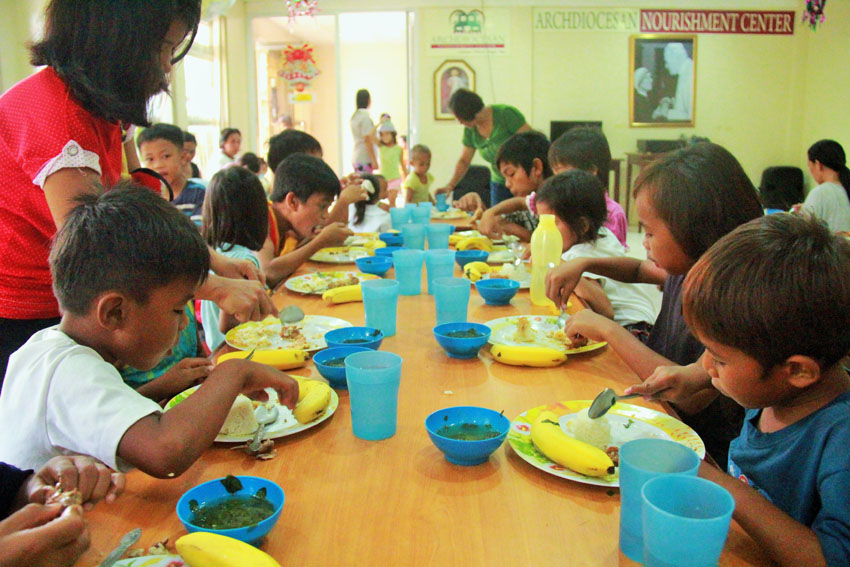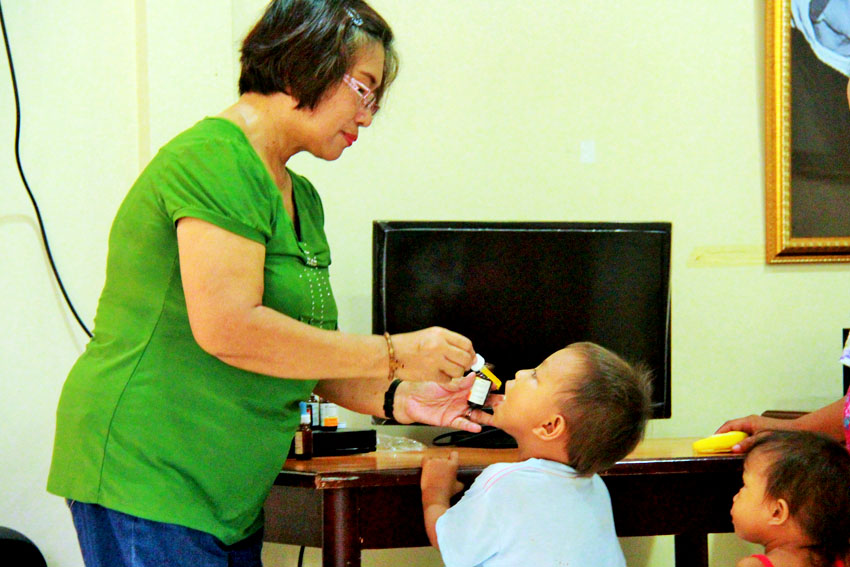
FREE LUNCH. Children enjoy eating their free lunch given by the Archbishop Nutrition Council during a regular nutritional status monitoring on Wednesday, Dec. 7 in Pag-asa Street, Davao City. Parents blame poverty and lack of job as the main reason why some of them could not afford to give their children proper nutrition. (Maricar Emata/davaotoday.com)
By Robby Joy Salveron, Intern
DAVAO CITY, Philippines—Poor nutrition remains prevalent among children in this city, both government statistics and a church group here claimed.
The Archdiocesan Nourishment Center (ANC) serves some 200 families with malnourished children spread across several barangays in this city.
The National Nutrition Council Region XI said Davao del Sur has the highest prevalence rate among the provinces in the region with 10.95 percent in 2015; while Davao del Norte has 5.39 percent; Davao Oriental with 4.74 percent and Compostela Valley with 4.61 percent.
Meanwhile, among the cities Davao City has the highest number of underweight with 8,336 children followed by Digos City with 1,287, Tagum City with 814, Panabo City with 622, Mati City with 505 and Island Garden City of Samal with 452.
For the number of severely underweight, Davao City has recorded 1,962 children followed by Digos City with 292, Tagum City with 157, Panabo City with 139, Mati City with 115 and Igacos with 79.

Sr. Ma. Felina S. Inting of Archdiocesan Nourishment Center (ANC) records the height and weight of the children during their monthly weight taking Wednesday, Dec. 7. ANC monitors the children’s height and weight development before they feed them free lunch. (Robby Joy Salveron/davaotoday.com)
Sr. Ma. Felina S. Inting, LGC, an officer of ANC, said “poverty and environment remain the main causes of malnutrition.”
Sheryl Sauza, 35, a housewife residing in Isla Verde regularly bring her four children during weekdays at the ANC for them to eat free, complete and nutritious lunch.
Sauza said that her children have poor appetite in foods and admitted that she and her husband could not afford to give them all the vitamins and other supplements they needed.
According to the ANC’s record, among Sauza’s four children, two are underweight while the other two are categorized as severe underweight.

Aside from well-nourished food, the children are given vitamins at the Archbishop Nutrition Council Center to supplement their needs. (Maricar Emata/davaotoday.com)
Meanwhile, the incidence of stunting (low height for age) in Davao region is higher than the incidents of underweight and wasting.In 2013 the stunting rate is at 14.69 percent. It grew by 1.08 percent to 15.77 percent in 2014, and decreased by 1.92 percent ti 13.85 percent by 2015.
According to Action Against Hunger | ACF International’s report titled, Socio-economic of Chronic Malnutrition in the Philippines: A preliminary key trends analysis by 2030, stunting is “caused by a failure to receive adequate food intake and is also affected by recurrent and chronic illnesses.”
“Inadequate nutrient intake during the first two years of life not only affects growth, but also negatively impacts brain development and the immune system,” it said in the report published in March this year.
“The overall stunting rates in the country remain high especially in rural areas (38.1 percent) and in the poorest quintile (49.2 percent),” the ACF International said.
It said the prevalence of stunting in the country is “unlikely to significantly reduce as long as the economic development of the country seems to thrive and even create, indirect factors to the problem.” (davaotoday.com)










